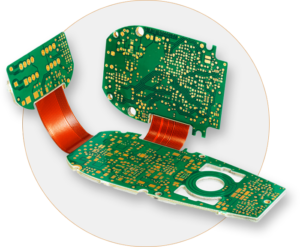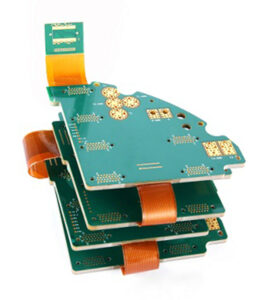Electric Vehicle Flexible PCB Design Copying (FPCBs) are fabricated using photolithography techniques. Another method is to laminate very thin copper tape (0.07mm) between two layers of polyester (PET). These PET layers are typically 0.05mm thick and coated with an adhesive that is heat cured during the lamination process. Its main advantage is the ability to bend electrical connections during normal operation, such as those between subsystems, to replace wiring, such as aerospace flex circuit board and automotive circuit board cloning.
In many areas of electronics, there is a growing demand for high-performance products with ever smaller size and weight. These stringent requirements require PCB reverse engineering solutions that can accommodate electronic components at high density in increasingly tight spaces. The automotive industry offers many potential uses for FPCBs, including steering wheel and dashboard control systems, displays, infotainment and audio systems, buttons, rotary encoders, and more.

Electric Vehicle Flexible PCB Design Copying (FPCBs) are fabricated using photolithography techniques. Another method is to laminate very thin copper tape (0.07mm) between two layers of polyester (PET).
These applications require high reliability, robustness, and simplicity of routing to minimize soldering, which can cause oxidation or false contacts due to aging and mechanical stress. FPCB-based devices have high resistance even in the presence of high vibration and shock, are less prone to failure, and have lower weight and higher circuit density, Electric Vehicle Rigid Flexible PCB Design Copying can help engineer to realize the application of these features;
In electric vehicles, the battery management system (BMS) monitors the state of the battery during operation. Smart features are necessary to extend battery life, which has a fundamental impact on total cost of ownership. The battery management system must continuously monitor the battery state of health, charge level and depth of discharge. As the battery ages, the different states of health of the individual cells correspond to changes in the nominal capacity: the challenge is to optimize the use of the battery with a monitoring circuit that ensures a balance of energy levels (active or passive) during operation. The flex circuit provides the perfect lightweight and compact way to connect each cell’s sensor to the BMS.

clone electrical vehicle flexible pcb board drawing






